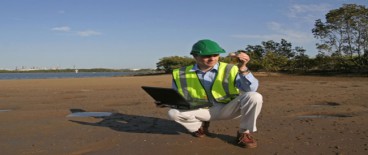How much sand do we have left? New transport equations for carbonate deposits

A new study provides insights and suggests new models on carbonate sand deposits movements. The study can shed light on the total amount of sand deposits that are left on earth.
Sand is a soil material that consists of rock minerals or small blocks. It forms from gradual erosion and weathering of rock materials that are transferred through rivers and finally reach the sea where they are further eroded due to wave action.
The most common type of sands is silica sands that contain quartz, a mineral found in rocks that is highly resistant to weathering. However, there are many more types of sands such as carbonate sands, volcanic sands, or greensands.
Quantifying the remaining sand deposits on earth is crucial given that sand is widely used in construction and other industries. In fact, it is the second most extracted deposit worldwide after fossil fuels. According to a report issued in 2019 in Nature, sand and gravel are being extracted at rates much higher than they are deposited, a fact that is partially caused by illegal mining activities.
Scientists from the Cyprus International University, the University of Sydney and the Eastern Mediterranean University collaborated to create more accurate models of measuring sand resources. Their findings were published in the Journal Scientific Reports by Nature.
Prediction models of sand deposits were created based on certain assumptions that derive from previous experimental data. One of those assumptions is that the sand grains are spherical, a fact that is generally accepted considering quartz sands. However, carbonate sands (which mainly consist of carbonate minerals) have an elliptical shape and larger porosity, thus, the current models cannot accurately predict their quantities and their spatial movement. “Not all sand is the same. Yet the models for assessing sand and how it moves mostly rely on one type. This means we have an inaccurate picture of what is happening, especially in coastal areas..." Ana Vila-Concejo, co-author of the study and an Associate Professor at the School of Geosciences, University of Sydney, stated.
The research team conducted experimental tests on carbonate sands to understand their behavior and derive mathematic models describing their mass movement. Moreover, they applied the derived models on data collected over a 6-year period on carbonate sand movements in Hawaii.
According to the results of the study, the outdated models used to overestimate the movement of carbonate sands on the seafloor by more than 20% while underestimating their suspended transport (the motion of the sand particles through the water) by more than 10%. “This means we are not accounting for sand correctly,” Prof. Vila-Concejo added.
Researchers agree that correctly predicting the movement of sand sediments is crucial in an era when climate change and sea level rise might affect a large portion of the coastal areas with sand deposits on the planet.
Source: University of Sydney
Want to read more like this story?

Vertek: Ensure Properties are Accurate Using Sediment Cone Testing
Jul, 03, 2014 | NewsObtaining a representative and undisturbed sample of cohesive sedimentary soil, such as sa...

The impact of precipitation on mountains' landform
Oct, 16, 2020 | NewsIn a new study, scientists focus on how precipitation impacts erosion rates in mountainous terrains...

The major role of Geology on the D-Day Landing in Normandy
Jul, 11, 2018 | NewsThe campaign that led to the WW2 allied victory in May 1945 began with the invasion in Normandy (Jun...

Video: Christchurch Earthquake Showing the Sand Liquefaction Process with Vibration
Aug, 05, 2015 | NewsSee how the sand is converted into liquid state due to vibrartion. This is what happened during the...

New study suggests a method to replenish depleted aquifers
Apr, 15, 2019 | NewsScientists from Stanford University have introduced a new method to replenish aquifers by using floo...

Sinkholes open in New Jersey's beach
Oct, 09, 2019 | NewsAbout 12 sinkholes have opened in Sea Bright beach, located in New Jersey, during the past days. Th...
SPTCorr
Oct, 07, 2013 | Software
Fulgurite: A rare phenomenon
Nov, 11, 2015 | NewsA bolt of lightning is able to deliver up to 5 gigajoule of energy (energy that can power a house in...

NorSand in RS2: An Advanced Constitutive Material Model
Mar, 09, 2021 | NewsRS2 - 2D Finite Element Analysis Software Back in March of 2019, RS2, our 2D finite element progra...
On This Day
April 16th 1955
READ MORE
Trending

Yellowstone Infrastructure Restored After Historic Park Flooding

A Tribute to Michele Jamiolkowski

UC Berkeley’s Professor Kenichi Soga to give 63rd Rankine Lecture

2023 Geotechnical job market analysis

World's most intricate subway networks

The story of Nauru is the perfect example of unsustainable mining

California landslides continue as several mansions are red tagged

